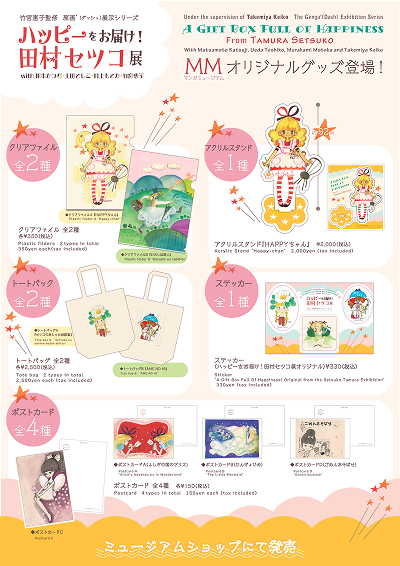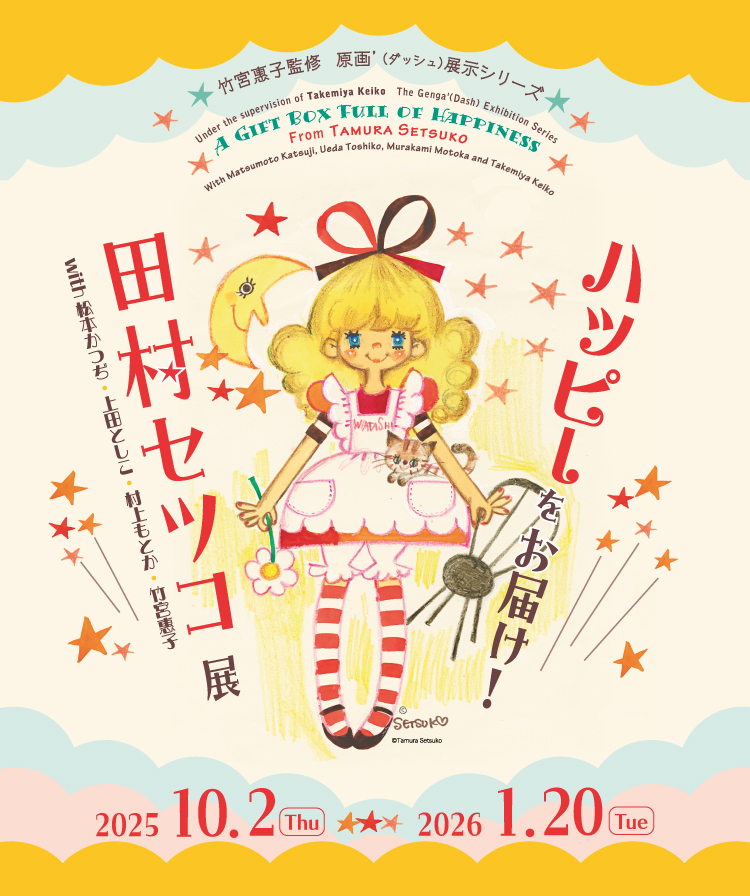
©Setsuko Tamura
Under the supervision of Takemiya Keiko―the Genga'(Dash) Exhibition Series
A Gift Box Full of Hapiness from Tamura Setsuko
―with Matsumoto Katsuji, Ueda Toshiko, Murakami Motoka, and Takemiya Keiko―
October 2 (Thu), 2025- January 20 (Tue), 2026
This exhibition marks the first public showing of newly created Genga’ (Dash) works by Tamura Setsuko. In addition, we are showcasing Genga’ (Dash) works by fellow participating artists closely connected to Tamura: Matsumoto Katsuji, Ueda Toshiko, Murakami Motoka, as well as by the project’s supervisor, Takemiya Keiko.
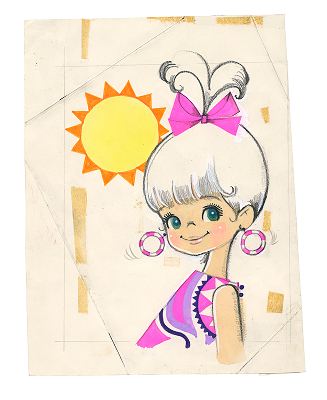
“Bonjour Ojo-san”
©Setsuko Tamura
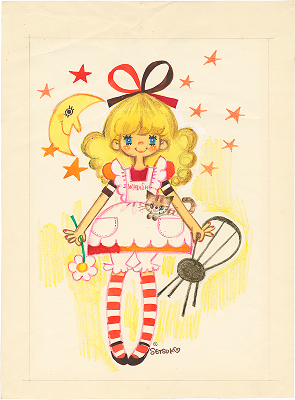
“Happy-chan”
©Setsuko Tamura
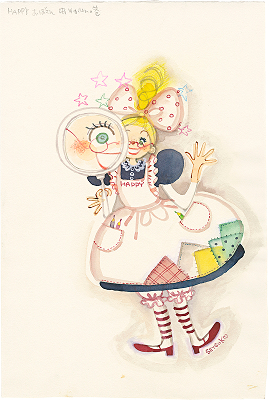
“Happy oba-san no oshare-banashi”
©Setsuko Tamura
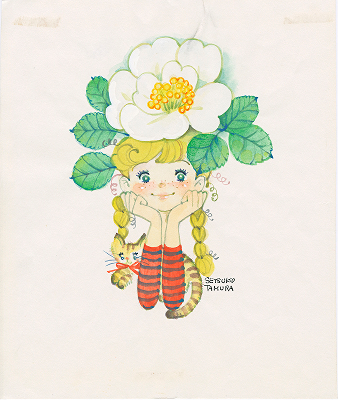
“Setsuko no oshare sodan”
©Setsuko Tamura
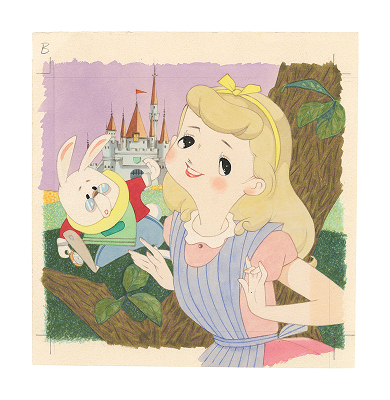
“Alice's Adventures in Wonderland”
©Matsumoto Katsuji
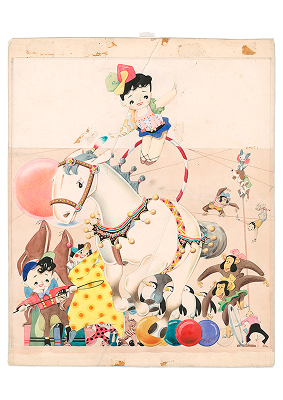
“Kurumi-chan circus”
©Matsumoto Katsuji
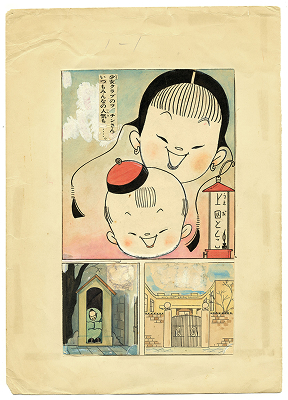
“Fuichin-san”
©Ueda Toshiko
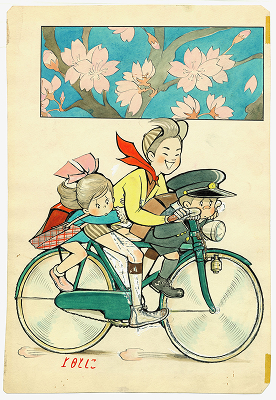
“Tulip-kun”
©Ueda Toshiko
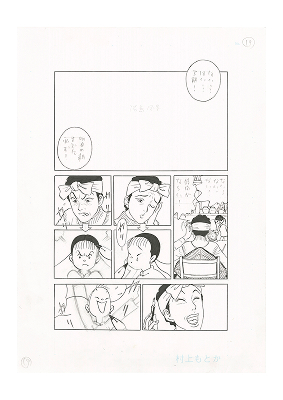
“Fuichin zàijiàn!”
©Murakami Motoka
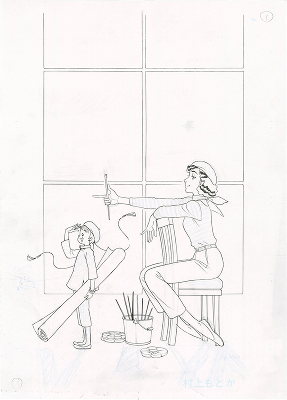
“Fuichin zàijiàn!”
©Murakami Motoka
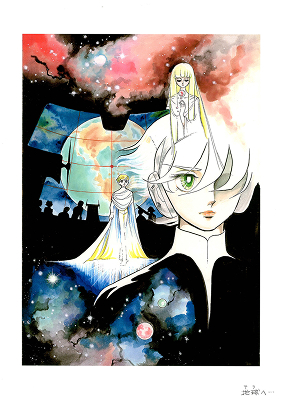
Hoshi no Umarerutokoro,
from “Towards the Terra”
©Keiko TAKEMIYA
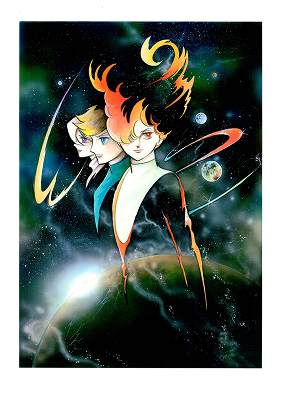
Terra e…
from “Towards the Terra”
©Keiko TAKEMIYA
Venue
Kyoto International Manga Museum, 2F, Gallery 4
Admission
Free
* However, a General Admission ticket to the Museum is required.
* Free admission on Nov 25th (Tue) for Kansai Culture Day.
*Tickets for same-day admission can be purchased at the ticket vending machine at the entrance.
*Admission tickets can be purchased at the ticket vending machine on the day of your visit or can be pre-purchased online.
Opening hours
10am-5pm (last entry at 4:30pm)
Closed
Closed every Wednesday and also closed in October on the 12th (Sun), 13th (Mon), 29th (Wed) and 30th (Thu), December 26th to January 4th, 2026.
Related event
Tamura Setsuko×Takemiya Keiko Talkshow
A talk event with exhibiting artist Tamura Setsuko and Genga’ (Dash) Project leader Takemiya Keiko. The two will discuss the background of Tamura’s works, in which she has continued to depict the world of “kawaii”, memories with other exhibiting artists, behind-the-scenes stories from the Genga’ (Dash) production, as well as their recent activities.
Date and time
November 3 (Mon), 2025 14:00-15:30
Venue
Kyoto International Manga Museum, 1F, Multipurpose Hall
Speakers
Tamura Setsuko (Illustrator),
Takemiya Keiko (Manga artist)
Capacity
200 people
Participation method
Advanced registration required, first come first served.
Please fill in the required information and apply below.
*It will only be in Japanese
*The application form is in Japanese.
*Applications will be accepted until 2pm on the day of the event.
*Registration will close once capacity is reached. (In the event of cancellations, you will still be able to apply, however we do not accept requests to be put on a waiting list.)
Manga Museum Original Goods
Original postcards, clear files, tote bags, stickers, and acrylic stands on Tamura Setsuko’s works on display at the exhibition will be on sale at our museum shop.
Maeda coffee manga museum café – Special menu
Tamura Setsuko “Happy-chan” Latte Art 850 yen
During the exhibition period only, visitors can enjoy latte art of “Happy-chan,” from the main visual of this exhibition.
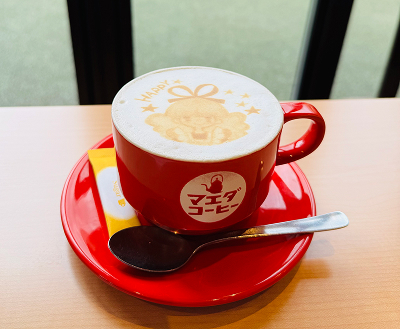
Reference
Tamura Setsuko
Born in Tokyo in 1938. In the late 1950s, she began working as an illustrator through the introduction of her mentor, Matsumoto Katsuji. In the 1960s, she rose to instant popularity with her contributions to the fashion pages of shojo manga magazines such as Ribon and Nakayoshi. She became an icon who embodied the dreams and aspirations of young girls. The bright and charming world of girls she depicted was widely merchandised as “Setsuko Goods”. It helped to shape a major current in postwar shojo culture. In her early career, Tamura also engaged in creating manga. After that, she continued to maintain strong ties with the manga world through book illustrations, magazine projects, and cover artwork. Her illustrations provided significant inspiration for shojo manga artists, particularly in the areas of character design and fashion expression. She has illustrated numerous children’s and translated works, including the The Twins at St. Clare’s series (Poplar Publishing). At 87, she remains an active and passionate artist, with many publications to her name such as Shiraga no kuni no Alice (Alice in the Land of Gray Hair, Shueisha). As a bridge between illustration and manga culture, Tamura has continued to be loved across generations.
Matsumoto Katsuji
Born in 1904 (-1986) in Hyogo Prefecture. He made his debut as an illustrator in girls’ magazines in the 1920s, gaining popularity with his depictions of young girls. In 1938, he began serializing “Kurukuru Kurumi-chan”, considered one of the pioneering works of shojo manga. The series continued for 35 years, with the protagonist Kurumi-chan becoming a beloved character. It was quickly merchandised, making it one of the very first Japanese character products. From around 1955, Matsumoto also worked on picture books and designed baby products. In particular, the baby tableware released by Combi Corporation became a major hit. He passed away in 1986. The manga museum holds 31 Genga’ (Dash) pieces of his works. Matsumoto was also the mentor of Tamura Setsuko. Their relationship began when Tamura, then a high school senior, sent him a letter. Impressed by the drawings enclosed, he recognized her talent and introduced her to editors, thus helping her embark on her career path.
Ueda Toshiko
Born in Tokyo in 1917 (-2008). At age 17, she became a pupil of Matsumoto Katsuji, learning jojoga (lyrical illustration) and manga. In 1951, her manga “Boku-chan” was published in Shueisha’s Shojo Book, attracting attention. In 1957, her series “Fuichin-san” in Kodansha’s Shojo Club became a huge success. Set in former Manchuria, the story featured a bright and clever Chinese girl protagonist, who gained immense popularity. In 1960, Ueda received the Shogakukan Manga Award. As a pioneer of humorous girls’ manga and, alongside Hasegawa Machiko, one of the earliest female manga artists, she had a profound influence on later generations. In 2003, she received the Japan Cartoonists Association Award, Minister of Education Prize. She passed away in 2008. The manga museum holds 35 Genga’ (Dash) pieces of her works. For Tamura Setsuko, Ueda Toshiko was her senior disciple under Matsumoto.
Murakami Motoka
Born in Tokyo in 1951. He debuted in 1972 with “Moete Hashire!” in Weekly Shonen Jump. His manga “Musashi no Ken”, serialized from 1981 in Weekly Shonen Sunday, became a massive hit, spawning an anime and games, and sparking a national kendo boom. In 1982, he won the Kodansha Manga Award for “Climbers Retsuden”, and in 2011, the Tezuka Osamu Cultural Prize for “JIN”. His masterpieces “RON” and “JIN” were also adapted into television dramas. Our museum holds 35 Genga’ (Dash) pieces of his works. For this exhibition, we are showcasing five original pages from his biographical manga “Fuichin Zàijiàn!” which portrays Ueda Toshiko as its protagonist. Through Ueda’s life story, the work also reflects the state of the manga industry and society of the time, featuring all of the artists presented in this exhibition.
Takemiya Keiko
Born in Tokushima Prefecture in 1950. She first gained attention through her submissions to Tezuka Osamu’s magazine COM and debuted in 1968 with “Ringo no Tsumi” in Weekly Margaret Special Edition. Building upon shojo manga techniques while incorporating shonen-style elements of science fiction and action, she expanded the scope of shojo manga. In 1976, “The Poem of Wind and Trees” established shonen-ai (romance between boys) as a recurring motif in shojo manga. In 1977, “Towards the Terra” introduced new themes in science fiction. These two works jointly won the 1979 Shogakukan Manga Award. From 2000 to 2020, she was a professor at Kyoto Seika University and served as Supervisor of the Genga’ (Dash) Project, collaborating with the university on research. The manga museum holds 102 Genga’ (Dash) pieces of her works. In this exhibition, 8 original pages from “Towards the Terra” are displayed. These were also featured in the Kansai Pavilion at Expo 2025 Osaka–Kansai this past May, where they received great acclaim.
Organizers:Kyoto Seika University International Manga Research Center/Kyoto International Manga Museum
Support:Tranquilizer Product, EKURA ANIMAL
* Please note that the schedule and contents are subject to change.

